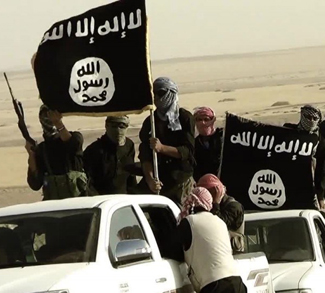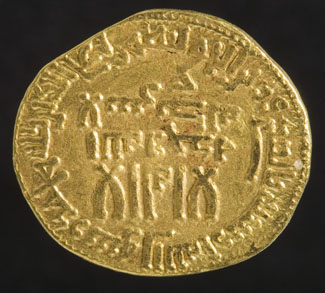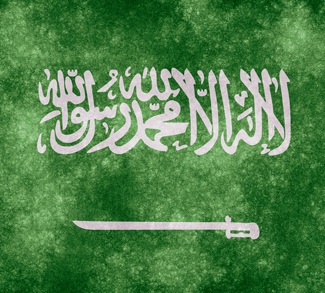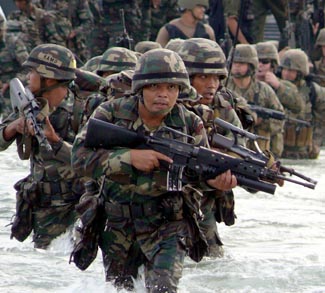Recent efforts by the international coalition against ISIS have focused on cutting-off the cash flow of the Islamic State, particularly in destroying revenue flows from its illegal oil trade. Air sortie after sortie have targeted the illegitimate oil-producing and smuggling infrastructure of the Islamic State. Yet notwithstanding some serious damage caused to Islamic State’s oil trade infrastructure, the international community is still far away from cutting off ISIS’ finances.
United Nations Resolution 2253, which culminated from the first-ever meeting of finance ministers on 17th December, with the primary objective to disrupt all sources of funding for the Islamic State in Syria and Iraq, only reinforces this resolve on the part of the international community. However, UN Secretary General Ban Ki-Moon seemed skeptical and appeared to reiterate the challenges faced by the international community, stating that the “terrorists continue to adapt their tactics and diversify their funding sources.” Addressing the granular aspects with respect to diversification and application of funds in governance mechanisms, which has provided the Islamic State with an internal source of income from ISIS-controlled areas, are the key challenges facing the counter terrorism financing initiative.
The Islamic State’s financial sources appear to have been diversified and evolved concomitantly with the terrorist group’s expansion. For instance, if we are to compare the growth of the Islamic State in two stages i.e., the first one from 2005-2012, and the second one from 2013 onwards, there are observable transitions in the financial sources (Table 1). During the initial stages, the Islamic State in its earlier form of Islamic State in Iraq (IQI), relied more on traditional sources of funding like high end donors, kidnap for ransom, looting, etc., However, once Islamic State started holding on to its territory in the second stage, oil trade, taxation and new funding sources like grassroots funding became its financial backbone.
The Islamic State has intentionally internalized and institutionalized its financial sources in the following ways: Firstly, sanctions by the international community have ostensibly targeted key donors for the Islamic State, primarily based in Qatar, Saudi Arabia and Kuwait. However, in 2014, David.S.Cohen, United State Treasury Undersecretary acknowledged that the Islamic State does not rely heavily on contributions from these high end donors. Given this fact, the sanctioning regime has been largely ineffective as Islamic State’s financial portfolio rapidly replaced these negligible high end donors outside its territory with grassroots funding. This transition was a blessing in disguise. And given its own experience in managing large private donors, Islamic State may have deliberately moved to grassroots funding which does not affect its autonomy. This attempt to move away from large private donations to high volume, low value crowdfunding using modern communications platforms appears to be highly deliberate and a calculated move to avoid detection and also unwanted political restraints from the donors.
And if we are to study the Sinjar records, the group relied more on contributions from foreign fighters in the late 2000s. According to the Soufan Group (TSG), the current strength of foreign fighters is estimated to be around 27000 – 30000 fighters, which has more than doubled since its 2014 estimate of 12000 fighters. As large number of foreign fighters started enlisting with the Islamic State, the relative contribution through them has increased proportionately. And more interestingly, each of these fighters act as de-facto brand ambassadors, spreading Islamic State propaganda through social media within their personal network. This in turn has invariably allowed more radicalized youngsters to contribute directly to the individuals who are not covered under the sanctioning regime, thus rendering it redundant.
Secondly, while financing activity resembled more of a criminal model between 2005 and 2012, it presently resembles a commercial and governance model, clearly in line with the territorial control of the Islamic State. Islamic State’s application of these funds in governance mechanisms in areas under its control has become a robust revenue generation model.
According to Islamic State’s captured administrative documents, Islamic State has established a separate department called Diwan al-Khadamat, (The Office of Services). This department is in charge of levying administrative and utility fees from the general public. For instance, cleaning tax is collected at USD 7 to USD 14 per month, electricity charges at USD 2.50 per month, water charges at USD 1.20 per month in Raqqa, the de facto capital of the Islamic State. Islamic state has also improvised to add more income generation capacity in the areas under the control. For instance, in Mosul, the Islamic State has converted an old police station into a 60 stall market with each stall fetching an annual rent of USD 2500. This idea of building infrastructure, providing governance and institutionalizing its revenue streams, which in turn could generate internal sources of revenue, appears to be a classic trait of a proto-state in the making.
Concomitant with this approach, the application of these funds have also evolved to encompass spending on building institutions and systems along with operational expenses like salaries compared to its earlier phase, where most of the funds were allocated to weapons and salaries. Islamic State has created social welfare institutions like schools, an Islamic court system, a consumer protection authority, and policing apparatuses.
Table 1– Transitions in Islamic State Financing Sources
| Category | 2005-2012 | 2013-2015 | Transition |
| Non Commercial Activities | Donations from large donors and fighters. | Donations from fighters and grass root funding methods using latest communications technology. | Higher levels of contributions from grassroots funding from foreign fighters. |
| Criminal Activities | Kidnap for ransom,looting. | Extortion. | While the kidnap for ransom levels increased considerably due to their political leverage, decreased levels of criminal activities like looting could be observed in the later phases of 2014. |
| Commercial and Governance Activities | Producing and trading in crude oil and antiquities trade, agricultural trade,different forms of taxation. | Criminal activity disguised as a governance measure such as taxation compared to a more blatant extortion activity. | |
| Application of Funds | Weapons and salaries. | A major portion is allocated to governance activities like establishing institutions, rebuilding efforts etc., apart from the military spending i.e., operational and organizational costs of the group. | More spending on governance activities. |
Apart from the above table, Islamic State relies on other assorted revenue and material generation streams which are beyond the purview of any international jurisdiction. For instance, Islamic State collects repentance fees from people in areas under its control. A person is issued a repentance ID for USD 2500 with a renewal fee of USD 200, which signifies that the card holder has repented and abandoned apostasy. On the other hand, repentance also takes the form of surrendering of weapons. Islamic State has practiced this concept of confiscation of weapons, wealth and materials, captured by the Islamic State, which are referred to as Mal-e-Ghanimat or “spoils of war.”
The key difference between the financial structure in the current stage and the previous one is the scale of funding. Previously, Islamic State used to earn approximately USD 1 million per month whereas the current average earning per day is around USD 1-3 million. Though criminal activities have continued to dominate the financial portfolio of the Islamic State, its reliance on looting and robbery has been replaced by a more organized form of taxation and extortion mechanism which is now the mainstay of the Islamic State’s finances. Asset based funding like oil and agricultural trade have also been added to Islamic State’s financial portfolio compared to its earlier financial profile.
These transitions in the financial networks are in a way evolutions borne out of the constant desire to evade countermeasures. For instance, large private donors have been replaced with small grassroots funding due to targeted sanctions on individuals who had been funding Islamic State. Sanctions, which were effective against Al-Qaeda’s “Golden Chain” may not be effective against Islamic State as identifying hundreds of crowdfunding individuals is impossible and impractical. As highlighted on Geopoliticalmonitor previously, the group’s reliance on external sources of revenue is relatively less as the Islamic State has been generating revenues internally from its crowdfunding stream, and has also institutionalized its governance model in order to attain self-sufficiency. While oil revenues could decrease due to targeted air strikes on its oil assets, revenue from taxation and extortion in areas under its control could pose a real challenge to the global anti-ISIS coalition. As counter measures to cut off external revenue from donors and internal revenue from oil bears fruit, the Islamic State could well revert to traditional criminal activities to augur its finances.
Until the Islamic State is deprived of the territory it currently controls, the idea of pushing the Islamic State to penury would be highly futile and a distant utopian dream.




